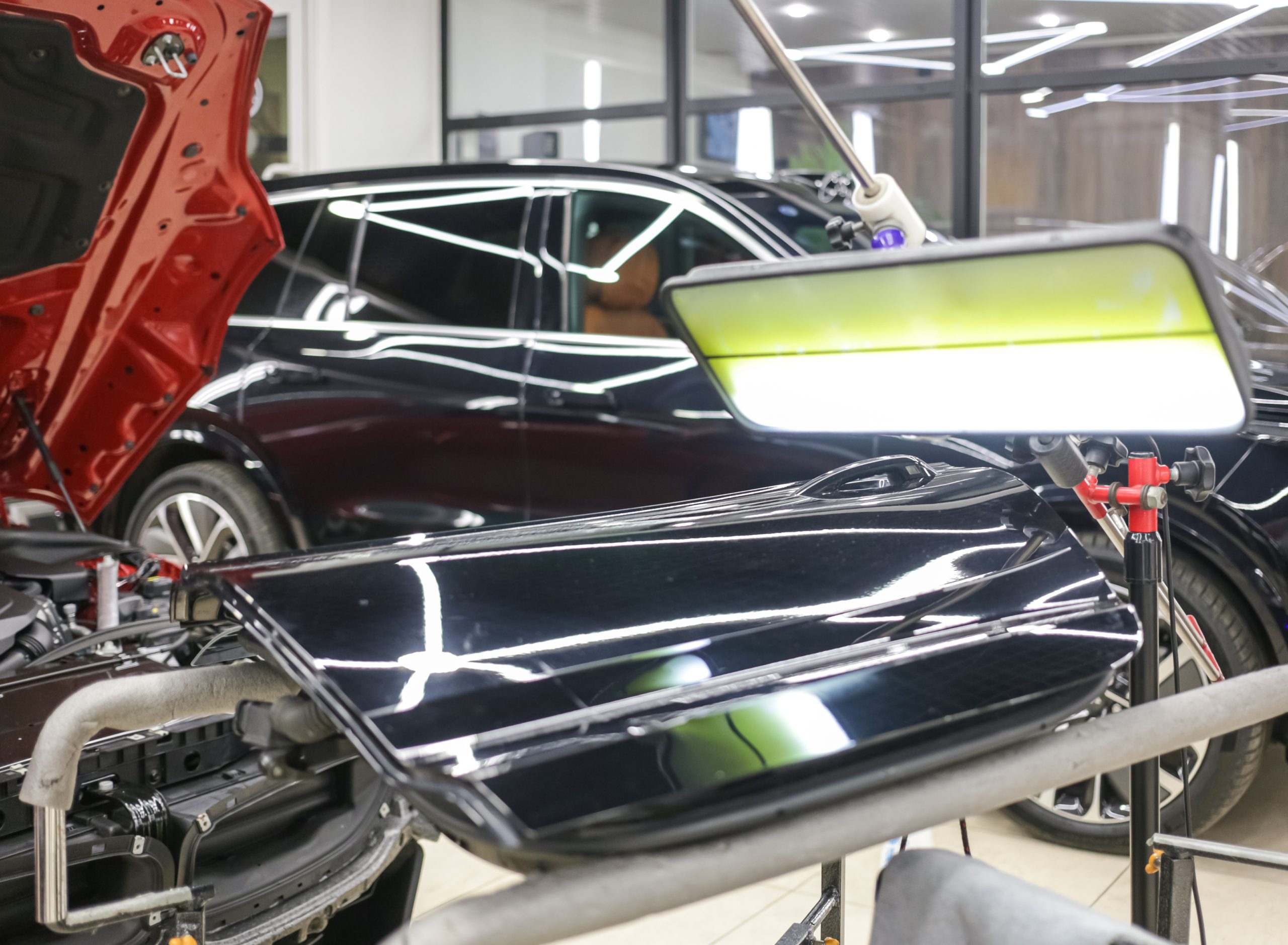If you’ve ever been caught in a hailstorm, you know the sinking feeling that comes with seeing your vehicle peppered with dents and dings. Hail damage can be a frustrating and expensive issue, leaving your once-pristine car with a less-than-appealing appearance. Fortunately, there’s a solution that’s quick, cost-effective, and doesn’t require extensive bodywork—Paintless Dent Repair (PDR).
Let’s explore why PDR is the best option for repairing hail damage and how it stands out compared to traditional methods.
What is Paintless Dent Repair (PDR)?
Paintless Dent Repair, or PDR, is a specialized technique used to remove minor dents, dings, and creases from the body of a vehicle without disturbing the original paint finish. This method involves skilled technicians who use specialized tools to access the backside of a dent and carefully massage the metal back into its original form. Because the paint remains intact, there’s no need for fillers, sanding, or repainting, which is typically required in traditional repair methods.
PDR is particularly well-suited for hail damage because it addresses the small to medium-sized dents caused by hailstones without compromising the integrity of the vehicle’s factory paint.
The Benefits of PDR for Hail Damage
1. Preserving Your Vehicle’s Original Finish
One of the most significant advantages of PDR is that it preserves your vehicle’s original paint finish. Why does this matter? Well, the factory paint on your car is engineered to last and is applied under highly controlled conditions. Once this paint is compromised—whether through sanding or repainting—it can affect your vehicle’s appearance, durability, and even its resale value.
With PDR, there’s no need to worry about mismatched paint or a noticeable repair job. Your car’s exterior will look as good as new, with no evidence that it ever endured a hailstorm.
2. Faster Repair Times
Hail damage can leave your car covered in dents, but that doesn’t mean you need to spend weeks waiting for repairs. Traditional methods often involve lengthy processes such as sanding, filling, priming, and repainting, which can keep your vehicle in the shop for days or even weeks.
In contrast, PDR is much faster. Skilled technicians can remove dozens of hail dents in a matter of hours, and for larger jobs, it typically takes just a few days. This means you get back on the road sooner without sacrificing the quality of the repair.
3. Cost-Effective Solution
When it comes to hail damage repair, cost is often a concern for vehicle owners. The good news is that PDR is generally more affordable than traditional bodywork. Because PDR doesn’t require the use of paint, fillers, or extensive labor, the overall cost is lower.
If you’re covered by comprehensive insurance, your provider is likely to cover the cost of PDR for hail damage, minus your deductible. Many insurance companies prefer PDR because it’s cost-efficient, and it restores the vehicle without the need for additional parts or repainting.
4. Environmentally Friendly
For the environmentally conscious, PDR offers a significant advantage over traditional methods. Traditional dent repair involves sanding, using body fillers, and applying paint, which often releases harmful chemicals and creates waste materials.
PDR, on the other hand, is a much “greener” solution. Since it doesn’t involve any painting or the use of harmful chemicals, it minimizes the environmental impact. Plus, because PDR preserves the existing materials on the vehicle, it reduces the need for additional resources.
5. Maintaining Your Vehicle’s Resale Value
If you plan to sell or trade in your vehicle in the future, preserving its resale value is crucial. Dents and dings can significantly lower the value of your car, especially if they’re visible. But traditional repairs that involve repainting can also lower resale value since potential buyers or dealers often prefer vehicles with original factory paint.
By opting for PDR, you not only remove unsightly dents, but you also maintain your car’s original factory finish, which can help protect its resale value. Buyers and dealerships alike will appreciate that the vehicle has been repaired without altering its original state.
When is PDR Not Suitable?
While PDR is an excellent solution for most hail damage, there are some instances where it may not be the best option. For example:
- Deep Dents or Sharp Creases: If the hailstones caused very deep dents or sharp creases in the metal, PDR may not be able to fully restore the shape of the vehicle.
- Damaged Paint: If the hail damage has caused the paint to crack, chip, or peel, PDR may not be enough. In such cases, traditional bodywork and repainting might be necessary.
At AutoBody by Fisher, we’ll assess the damage to your vehicle and recommend the best repair method. If PDR is suitable, it’s undoubtedly the fastest, most cost-effective, and eco-friendly option.
Final Thoughts
Hail damage is an unfortunate reality for many vehicle owners, especially in areas prone to sudden storms. The good news is that Paintless Dent Repair offers an efficient and affordable solution to restore your vehicle to its original condition. From preserving your car’s paint finish to saving you time and money, PDR is a win-win for anyone looking to repair hail damage without the hassle of traditional bodywork.
At AutoBody by Fisher, we specialize in PDR for hail damage and take pride in delivering high-quality results. If your vehicle has been caught in a hailstorm, don’t hesitate to reach out to us for a free estimate and expert advice. Let us help you get back on the road with a car that looks as good as new.


Leave a Reply